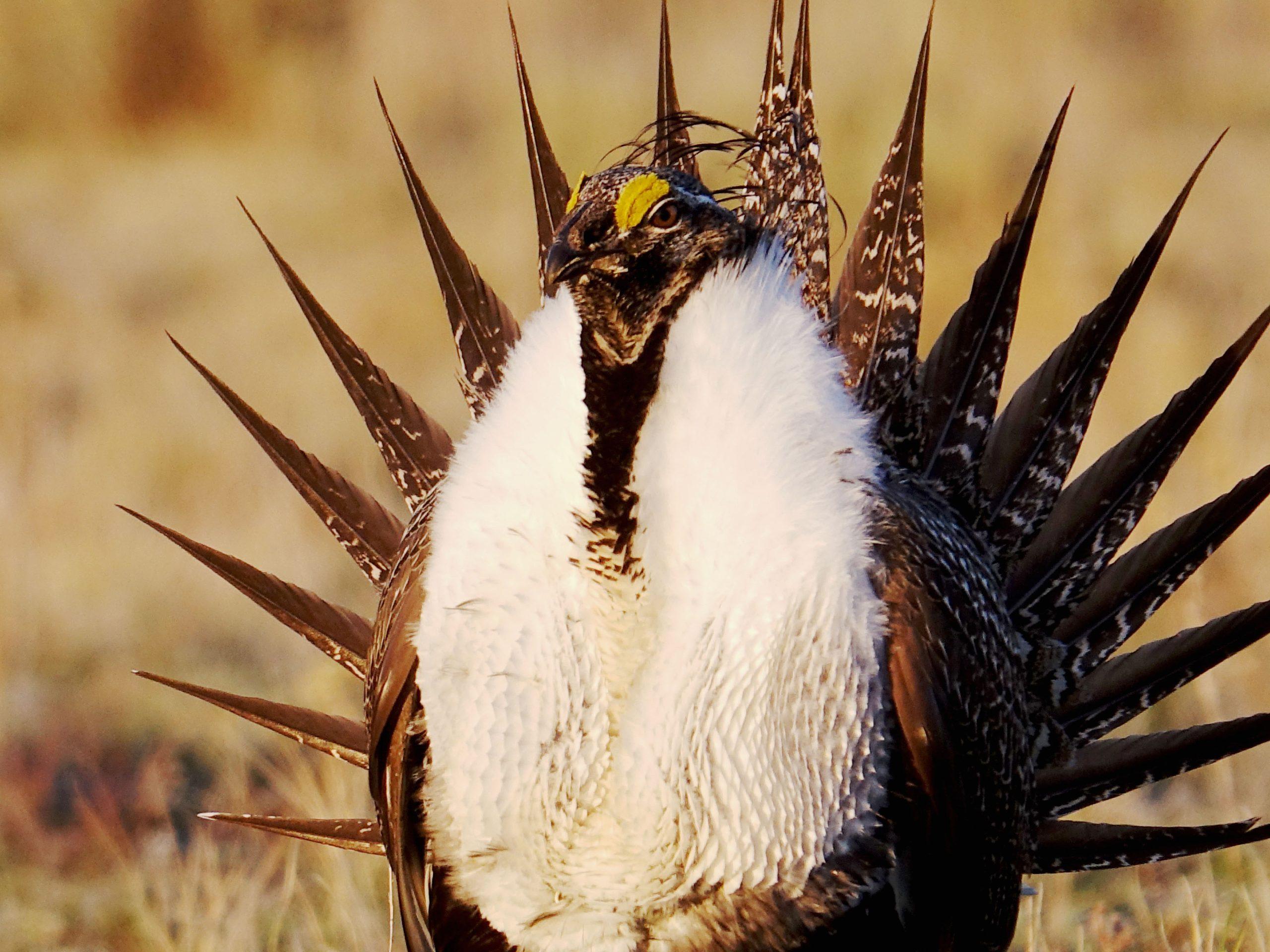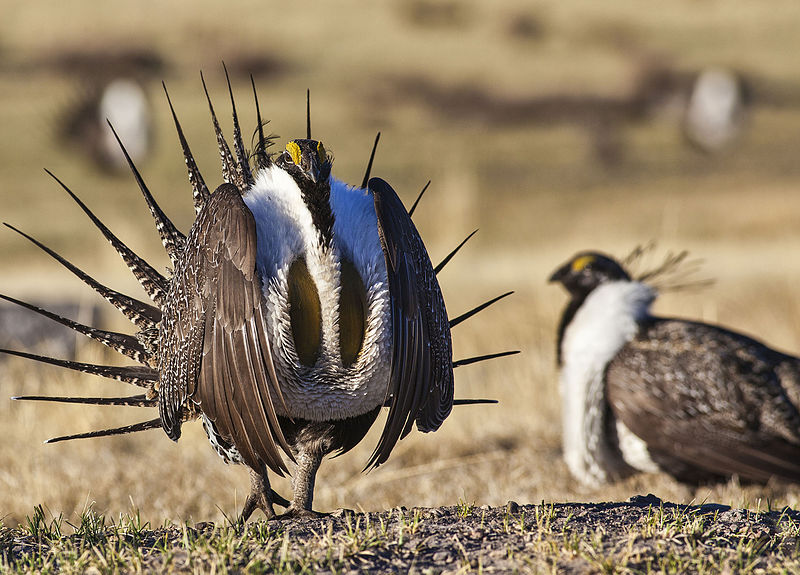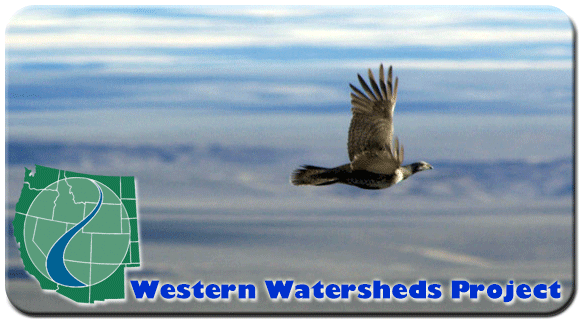-
The sagebrush steppe dominates the drier parts of the West, including parts of Southeast Oregon, much of Nevada, southern Idaho, western Wyoming, western Colorado, western Utah, and parts of New Mexico. Sagebrush steppe covers 165 million acres of the West. Due to many factors, including farming, ranching, subdivisions, and, most importantly, range fires, sagebrush vegetation…
-
The numbers don’t lie — and the sage grouse “collaborative conservation effort” is a total and on-going failure. There were 16 million Greater Sage Grouse before Europeans arrived and began the destruction of the “sagebrush sea” in the Great Plains. The iconic birds were down to 400,000 in 2015 when Obama’s Secretary of Interior, Sally Jewell, rejected…
-
Male sage grouse strut on a lek to lure females into breeding. Photo by Bob Wick, BLM One often doesn’t get good news, but this week, the U.S. District Court agreed with conservation groups that the Bi-State Sage Grouse was illegally removed from its listing under the Endangered Species Act (ESA). Efforts to list sage…
-
When the Bureau of Land Management released its final analysis on sage grouse plan changes in early December, a flurry of media stories trumpeted the reduction of protected sage-grouse habitat from 10 million to 1.8 million acres of federal land. That sounds like a big bad deal, but the reality is even worse. The plan…
-
The Idaho BLM is proposing to remove juniper from over 600,000 acres of land in the Owyhee River area of southern Idaho ostensibly to benefit nesting sage grouse. Sage grouse avoid treed areas, so the idea is to cut down juniper to increase sage grouse habitat quality. While there is no doubt from the literature…
-
The headline in a recent Capital Press article proclaims that “Preliminary data shows cattle, sage grouse can coexist”. http://www.capitalpress.com/Livestock/20171016/study-preliminary-data-show-cattle-sage-grouse-can-coexist The article then goes on to quote various researchers who are at the beginning of a ten-year study. According to the article, grazing allotments were grazed according to traditional patterns for two years, then the…
-
FILLMORE, Utah— Conservation groups today condemned a U.S. Bureau of Land Management proposal to auction off 14,943 acres of public land in central Utah for fracking and drilling, which will hurt an imperiled population of greater sage grouse. The Bureau previously announced that it would include lands occupied by the Sheeprocks sage grouse population and…
-
Rep. Rob Bishop (R-UT) and Sen. Jim Risch (R-ID) have introduced legislation that is an extreme and irresponsible attack on your public lands and the wildlife they support. This bill has the Orwellian title of the “Greater Sage Grouse Protection and Recovery Act,” (S.273, H.R.527). These bills would do the opposite of what their…

George Wuerthner is an ecologist and writer who has published 38 books on various topics related to environmental and natural history. He has visited over 400 designated wilderness areas and over 200 national park units.




